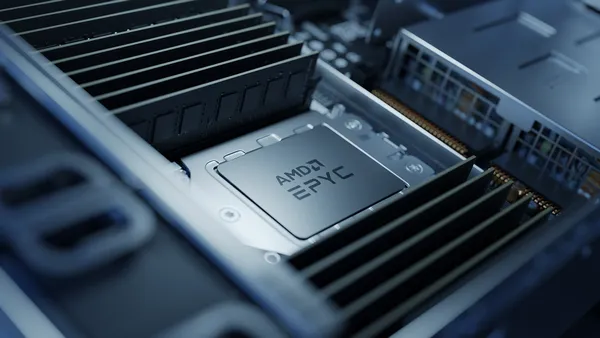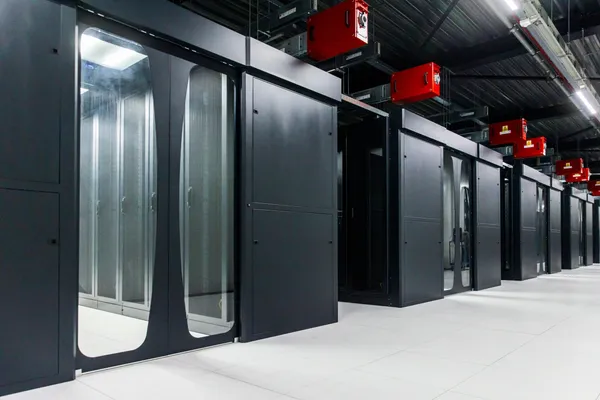How SDN and NFV Can Benefit IT Infrastructure Deployment
Knowledge blog

SMBs and Enterprises increasingly have a need for flexible networks with greatly enhanced network functionality. This market requirement is triggered by trends such as cloud computing, hybrid IT, edge computing, Internet of Things (IoT), big data, and also 5G-driven use cases. The combination of software-defined networking (SDN) and network function virtualization (NFV) technologies can bring the flexibility and instant scalability, as well as ease-of-use and cost-effectiveness which SMB and enterprise organizations are looking for.
Using SDN and NFV to your advantage and deployment of IT Infrastructure
SDN and NFV are complementary to each other. When an SDN/NFV powered network is intelligently designed, these two technologies combined can offer a powerful solution to SMBs and enterprises to deploy their IT infrastructures on regional and global scales. It is therefore not surprising that the market size of virtualized network functions is projected to grow significantly during the coming years.
According to MarketsandMarkets, the market size of virtualized network functions is projected to grow from $12.9 billion in 2019 to $36.3 billion by 2024, at a compound annual growth rate (CAGR) of 22.9% during the forecast period. Other market research companies anticipate even higher growth rates. Meticulous Research for example has anticipated the virtualized network functions market size to grow at a CAGR of 34.9% from 2020 to 2027 to reach $122 billion by 2027.
SDN Adoption
Network Function Virtualization is actually the key element boosting Software Defined Networking adoption. SDN is just about separating the control plane of a network from the data plane forwarding the network traffic. It is basically about automating the management of routers, switches and access points by opening up the intelligence of the hardware and making it controllable through centralized controller software. So, in fact, SDN is mainly about the management of network tasks. Including setting up VLANs or creating network connections.
NFV on the other hand is all about detaching network functions from traditional network-related hardware devices, such as firewalls, load balancers, intrusion detection devices, and other network appliances. NFV is capable of moving these networking services from dedicated hardware to a virtual environment. NFV does not seek to replace all of the physical network infrastructure with a virtual version though. The network will always have a physical component.
A great advantage of Software Defined Networking and Network Function Virtualization is that these technologies can be combined. As a result, NFV offloaded network functions can easily be controlled from the central SDN controller. If the SDN controller is intelligently designed, that’s to say, and only then it will lead to achieving maximum results in terms of flexibility, instant scalability, ease-of-use, and cost-effectiveness when deploying IT infrastructures. Worldstream’s in-house R&D engineering team spent more than a year developing its EVPN VXLAN powered Worldstream Elastic Network (WEN). Much of the development work of this SDN/NFV powered network went into the custom development of the network’s SDN controller. Built on top of Worldstream’s global network backbone, the uniquely developed controller in fact acts as ‘the brain’ of Worldstream’s software-defined network.
As-a-Service: Firewalls, Storage, Bare Metal, Hypervisors
For enterprises and SMBs alike the combination of SDN and NFV more or less brings the power of the cloud to the network. Its flexibility. Its scalability. Its redundancy. Its ease-of-use. Next to that, it gives SMBs low-cost access to high-end IT services that were previously out of their reach. For enterprises on the other hand, it may bring significant cost reductions when it comes to their IT deployments.
Through the combined use of Software Defined Networking and Network Function Virtualization, organizations are perfectly equipped to flexibly meet ultimate hybrid IT architecture requirements. For a wide variety of use cases at the edge including hybrid IT, Internet of Things (IoT), Industry 4.0, and data compliance management, to name a few. It allows for an easy roll-out of IT functionality ‘as-a-service’, even on-demand, catering to the needs of cloud-like pay-per-use business models. You may think of IT functionality such as firewalls, load balancers, storage solutions, bare metal, VMs, hypervisors, backup & disaster recovery, you name it. What’s more, the combination of SDN and NFV into one solution uniquely provides the opportunity to interconnect computing resources like these in a highly dynamic manner. Again, at the edge, meeting global as well as regional needs of SMBs and enterprises. SDN and NFV combined also allows for easy setup of data center failover locations; executing multi data center strategies; as well as flexible and scalable connectivity between different office locations. In fact, potential use case examples with SDN are almost endless.
Flexibility, Redundancy and Cost-Reduction
In the introduction and throughout this article we have emphasized the benefit of flexibility that Software Defined Networking combined with Network Function Virtualization can bring us when deploying IT infrastructures. Flexibility truly is incredibly important for safeguarding future IT deployment needs. The relentless adoption of cloud computing, IoT, and big data will drive immense traffic growth. This increasingly requires networks that are smart and elastic enough to support all of these digital transformation initiatives. SDN/NFV powered networks including the globally available Worldstream Elastic Network are perfectly capable of meeting these elasticity needs, certainly if the SDN controller is well designed and network intelligence conditions have thus been met.
A new IT infrastructure deployment model is actually needed to address the imminent challenges that organizations worldwide are facing when adopting cloud computing, hybrid IT, edge computing, 5G, Internet of Things (IoT), and big data. A model that brings more flexibility in service provisioning and control. An agile model flexibly supporting on-demand services delivery while offering instant scalability options for dynamic applications. A model which seamlessly supports deployment across multiple environments including on-premise, private cloud, hybrid cloud and multi-cloud.
When smartly designed, SDN/NFV powered networks can meet all of these needs, now and in the near future. It can provide a solid foundation for driving better data center economics with significantly enhanced operational efficiencies and reduced Capital Expenses (CAPEX) and Operating Expenses (OPEX). For end-users and service providers, it can accelerate service innovation and provisioning while addressing the interconnectivity and interoperability issues which often hold back traditional equipment-dependent networks.
About Worldstream's SDN/NFV-based platform
Bolstered by Worldstream’s global network backbone, the Worldstream Elastic Network (WEN) is an SDN/NFV-based platform allowing for agile and cost-effective deployment of a broad portfolio of network functions, both regional (at the edge) and global. It gives SMBs, Enterprises and Service Providers the opportunity to provision and interconnect their data center resources at ease and dynamically migrate workloads in real-time. To learn more about WEN, take a look here.
We have 15 years of knowledge and experience with data centers, servers, and network management. The result is more than 15,000 dedicated servers spread across two in-house data centers through sister company Greenhouse Datacenters. In addition, Worldstream uses locations in Frankfurt and Amsterdam. High-quality IT infrastructure that is flexible and affordable. Emphasized by the sky-high Net Promoter Score of 74 (NPS/US) and satisfaction rating of no less than 9.6.
Curious about the plethora of solutions built upon opon our Worldstream Elastic Network platform? Discover our solutions here.
You might also like:
- IaaS and the rise of As-a-Service.
- The search for a better definition of the cloud.
- Want to know the difference between managed and unmanaged FWaaS?
Have a question for the editor of this article? You can reach us here.
Latest blogs
Worldstream unveils new positioning and offers customers more control over their digital infrastructure

News

5th Gen AMD EPYC 9355P – Now Live at Worldstream

News

Nokia strengthens Worldstream’s hosting security with advanced DDoS Protection in the Netherlands.
News

Server Clustering vs Dedicated Servers: Key Differences and Benefits for Your Business

Knowledge blog

What IT leaders need to know about the Digital Services Act
Knowledge blog

Low Network Latency: Critical for Sectors like E-commerce, Cloud, and Healthcare
Knowledge blog
